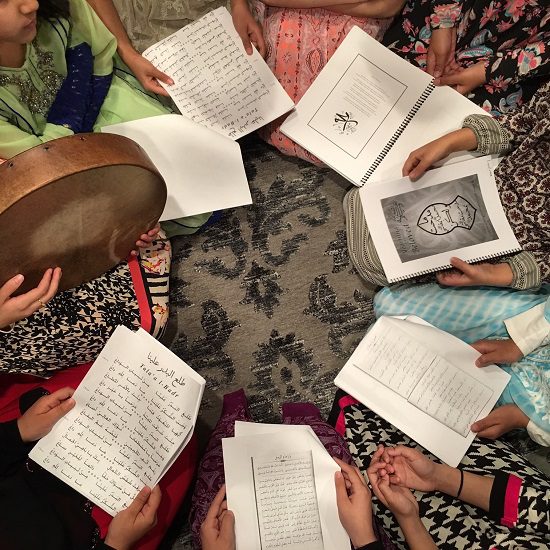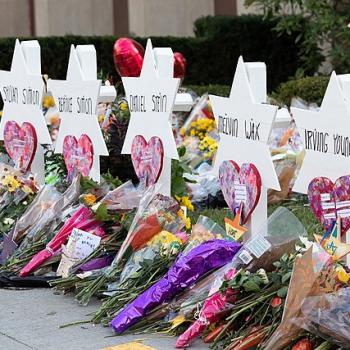All people should be concerned with the recent nuclear proliferation agreement proposed by President Bush, which is currently being debated in Congress. Citizens and their Congressional Representatives on both sides of the aisle have expressed alarm over this issue. The lack of media coverage has shaded the masses from this issue that should be important to Americans and others around the world.
The US is breaking from a policy of not giving nuclear aid in any form (weapons or otherwise) to any country by signing a nuclear agreement with India. It is especially noteworthy because as a signatory to the Nuclear Non-Proliferation Treaty, the United States cannot spread nuclear technology much less provide material nuclear support countries that have not signed the NPT.
By giving nuclear weapons aid and technology to India, the United States is setting a dangerous precedent. India has never been a close, reliable, or a vital ally of the United States. History shows that during the Cold War that many times India aligned itself with the Soviet Union against the United States and really played both sides. Yes, a positive economic relationship with India is in the interests of the United States, but a nuclear and military relationship is not. Though some speculate that forging a closer relationship with India will serve to buffer China, the agreement looks like another example of our government exercising futile, shortsighted policies that have long-term consequences. It also sends a bad message to other states, like Iran and North Korea, that are trying to obtain nuclear technology. Other countries might also rethink their nuclear policies and seek nuclear weapons programs.
In a Washington Post opinion piece, former President Jimmy Carter explains the many problems with this deal including the fact that it increases the chances of nuclear holocaust. Nuclear non-proliferation was a big issue back in the day and it’s as big a danger – if not more – nowadays. It’s been on the back burner and people don’t know or don’t care, partly because the media is not really paying attention.
We should be concerned as citizens because we are spreading Weapons of Mass Destruction. There is no limit on how much technology that can be shared. The problem is not that America is sharing secrets with one country over another; it is that the US is proliferating – period. It will spur the nuclear arms race in South Asia and could further destabilize a volatile region of the world.
If you take a look at what the nonproliferation community’s overwhelming response has been to this deal, you can realize that there is broad-based opposition to the plan from all political ideologies. Former Senator Sam Nunn, the co-author of the Nunn-Lugar Cooperative Threat Reduction program in Russia, has especially been outspoken out on the deal. He has explained how under the pact, India is to separate its civilian and military nuclear programs over the next eight years to gain U.S. expertise and nuclear fuel to meet its rapidly rising energy needs and India’s civilian facilities would be subject for the first time to permanent international inspections, but the agreement does not require oversight of India’s prototype fast-breeder reactors, which can produce significant amounts of weapons-grade plutonium when fully operational. The entire nonproliferation community is riled up about this.
Some argue that the agreement will lower energy costs in the United States because the Indian�will be less reliant on fossil fuels. There are better alternative renewable energy sources like solar, hydrogen, wind, or even bio-energy that we should be encouraging and developing over spreading nuclear energy. Even if the nuclear energy agreement was accepted the decreases in American energy costs have not been proven to be more than marginal.
A common myth is that the nuclear technology that will be shared is for civilian purposes only, but in fact the United States is going to share technology that will significantly strengthen India’s nuclear weapons stockpile. In a time, when most countries, including the United States are recognizing the dangers of nuclear technology and are even moving away from nuclear power, spreading nuclear technology is ill-advised. The countries of the world decided almost a half a century ago that disarmament and moving away from nuclear weapons was the best path and now we are helping to increase the world�nuclear weapons stockpile.
Many people also overestimate India’s current nuclear capabilities, especially their uranium and plutonium enriching technology, which is rudimentary compared to what the technology offered by the United States will allow. The Bush administration originally sought a plan that would have allowed India to continue producing enough nuclear material for six to ten weapons each year, but the new plan would allow India to produce enough fissile material for fifty weapons a year. This will greatly exceed its current capacity. All India has right now is forty weapons total and this agreement will exponentially increase India�weapons program and drastically increase their capacity to construct warheads.
Another myth is that this agreement will make India safer. Part of this argument is that it will decrease nuclear radiation and lower the risks of nuclear disasters. However, once you realize that increasing nuclear energy facilities only increase the probability that one of them will be susceptible to a meltdown, a terrorist attack, or some other nuclear disaster, this argument is not strong. That is one of the reasons why the United States, in the post-Chernobyl world, has moved away from nuclear technology – it is simply too risky. Increasing the odds for one of the many doomsday scenario disasters is not good for our world. The biggest criticism of the agreement is that it does not require the Indians to do anything new with respect to their safeguards. This is a bad deal just in terms of the fact that we are giving a lot and getting very little in return.
People say that the agreement brings fourteen of India’s twenty-two power reactors under international safeguards. Actually, it only brings eight new reactors under safeguards, which is much less than present. Next, the agreement gives the Indians the discretion to decide which of their reactors is “civilian” and which is “military.” There is nothing to prevent India to get assistance for a civilian reactor and switch it over to military use at any time. Also, the agreement only specifies that thermal reactors are civilian, and says nothing about breeder reactors. The administration is glossing over this fact.
Many also say that India does not belong in the same sentence at North Korea and Iran, yet interestingly enough, India has been put into the same sentence as Iran quite a bit lately. A huge point of contention right now is India’s warm relationship with Iran. By principle, India believes that all countries are entitled to nuclear weapons, including Iran. It has always protested the idea of the NPT (that only a few states had a right to nuclear technology) vehemently. Thus it would not support sanctions on Iran, and wants to build an energy pipeline stretching from Iran to India through Pakistan. Congressman Tom Lantos (D-CA) has brought this up because there is no way for the US to stop them from doing this. Some say that the nuclear deal will prevent Indian cooperation on energy with Iran, but there is no evidence or assurances from the Indian government to back this up.
India’s proliferation record is not perfect. For most of recent history, the US did not care to know about India’s nuclear program because India became nuclear through a loophole in the NPT at a time when it was not recognized as such through a peaceful nuclear explosion. Part of Congress approving this deal will be closer scrutiny at India’s record. Some Indian scientists are currently sanctioned for proliferating by doing business with Iran in dual-use items. David Albright has exposed many points of the permit network that India ran. They have also sought to evade the export controls of other countries. There are also instances where India has been derelict in procurement and allowed leaks into larger procurement networks.
The agreement will also hurt US foreign relations with countries like Pakistan. China is livid and feels that if the U.S. is now allowed to share nuclear technology then China will assert its right to do the same, namely to Pakistan. This will fuel the inevitable nuclear arms race between the two nations that will further destabilize the volatile region of South Asia.
The deal is simply a horrific idea that can be stopped. The Christian Science Monitor has reported on March 24th that politicians and activists from a broad spectrum of political beliefs are coming together to oppose the plan and it is vulnerable to defeat. Currently, Representatives Edward J. Markey (D-MA) and Fred Upton (R-MI) have introduced Resolution 318 in the House of Representatives, which expresses concern about nuclear cooperation with India and compels the United States to consistently fulfill its obligations under the NPT. The legislation will also allow the United States to demonstrate its ongoing commitment to global non-proliferation and to conserve positive international relations with states currently party to and complying with the rules of the NPT. The US can and should strengthen ties with countries like India through expanded cooperation in trade and human development, scientific and medical research, energy technology, and humanitarian relief. However, the US should not expand nuclear cooperation with any state if it comes at the expense of efforts to curb the spread of nuclear weapons.
Zeeshan Hafeez is a JD candidate at Georgetown Law School in Washington, DC.











